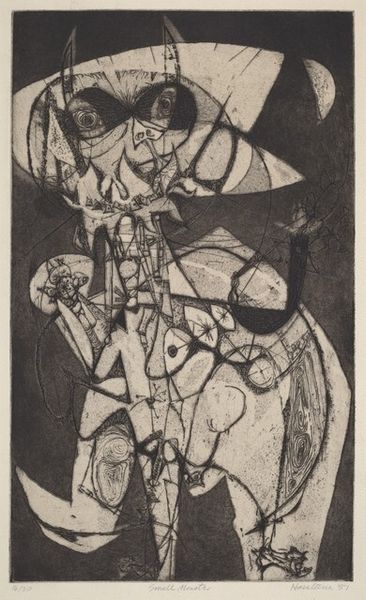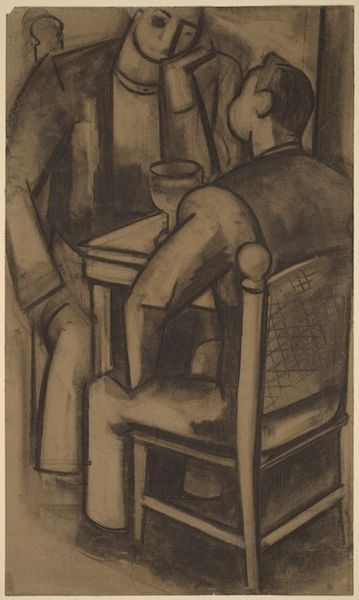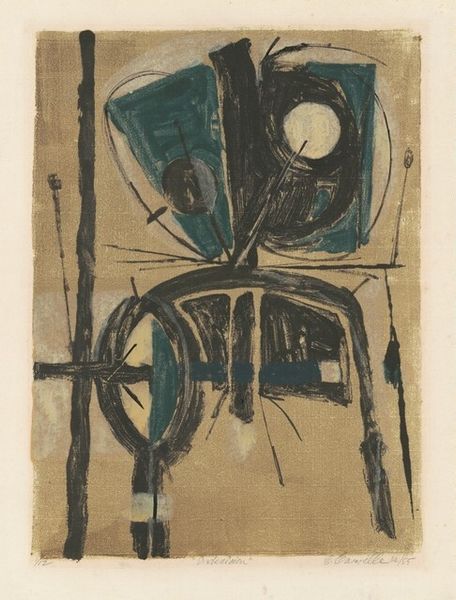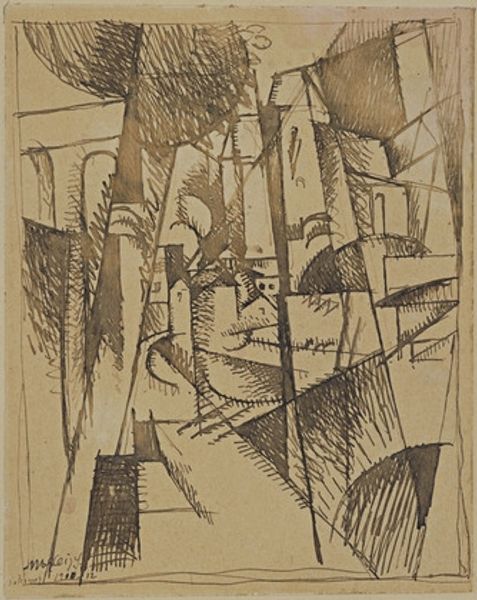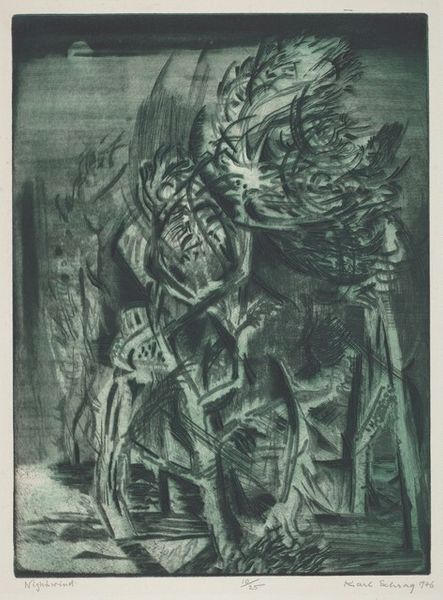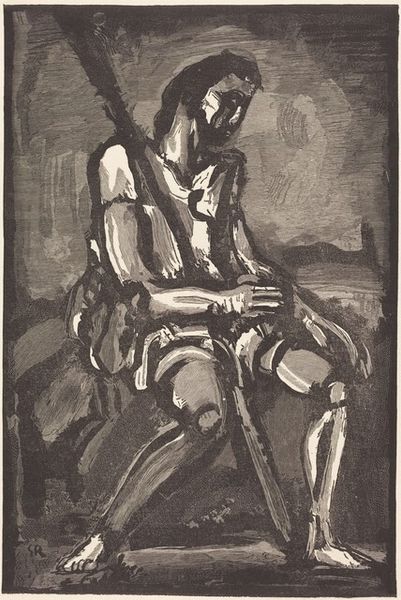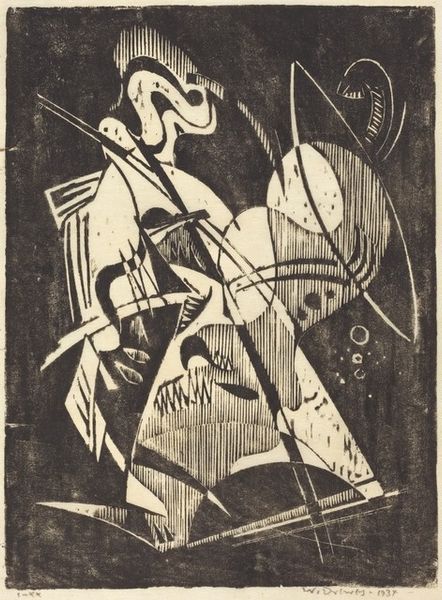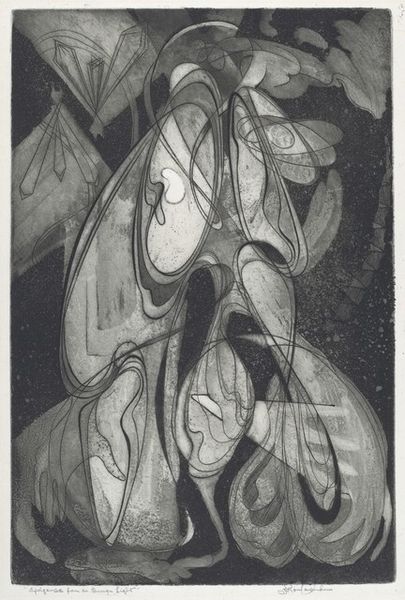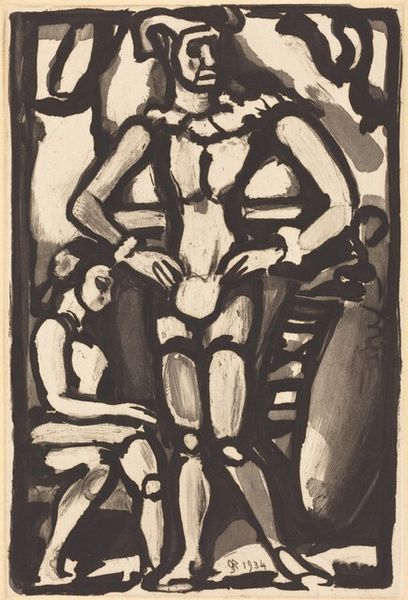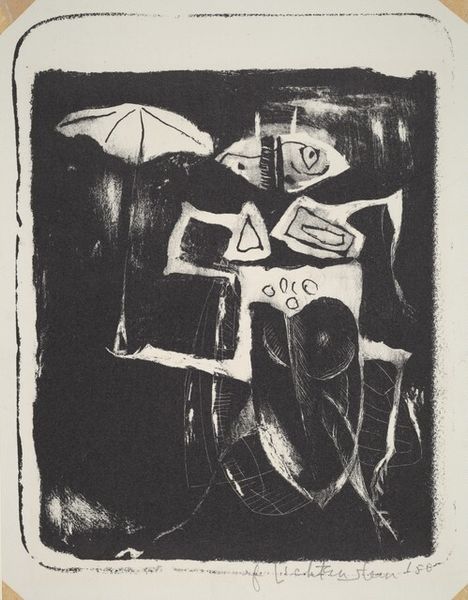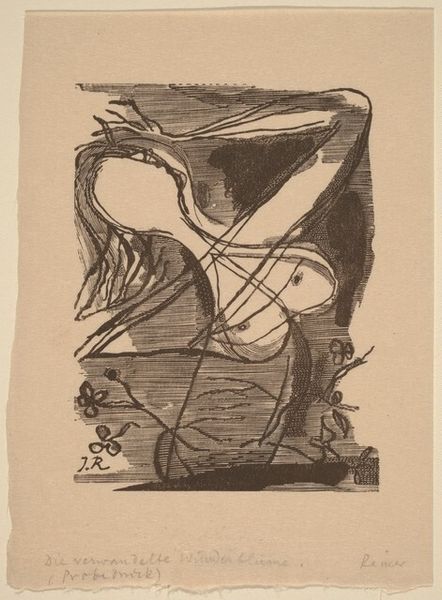
print, etching
#
portrait
# print
#
etching
#
figuration
#
abstraction
#
line
#
modernism
Dimensions: sheet: 32.7 × 25.08 cm (12 7/8 × 9 7/8 in.) image: 25.08 × 14.92 cm (9 7/8 × 5 7/8 in.)
Copyright: National Gallery of Art: CC0 1.0
Editor: Here we have N. Krishna Reddy's "Musician," created in 1957 using etching. The fragmented lines create this melancholic feel to the work. How do you interpret this work? Curator: It's tempting to simply appreciate the visual and formal elements—the line, the abstraction—but I think we need to ask *why* this figure is so fragmented. How might this broken representation relate to the artist’s own identity and experiences navigating post-colonial India and the Western art world? Is the musician, perhaps, a symbol for the displacement and re-articulation of cultural identity? Editor: That’s fascinating, I hadn’t considered it like that! So, the abstraction could be about more than just visual style. Curator: Exactly! Reddy moved between cultures and artistic movements. The figure's distortion, and even the stark tonal contrast, might represent a grappling with these different worlds. Consider too, the tradition of the musician as a figure for the soul—could Reddy be asking us to contemplate the fractured state of the modern soul, caught between tradition and modernity? Editor: I see how that contextual background adds a lot. It’s almost as if the visual fragmentation mirrors the feeling of cultural fragmentation. Curator: Precisely! And even the choice of etching, a traditional printmaking method, seems significant. Is Reddy consciously engaging with artistic heritage while simultaneously pushing its boundaries? It encourages us to see art not as existing in a vacuum, but as a response to social and political realities. Editor: That makes me see the artwork in a new light. It feels like it has much more depth now! Curator: It's exciting how considering social context opens new ways of seeing even familiar things.
Comments
No comments
Be the first to comment and join the conversation on the ultimate creative platform.
